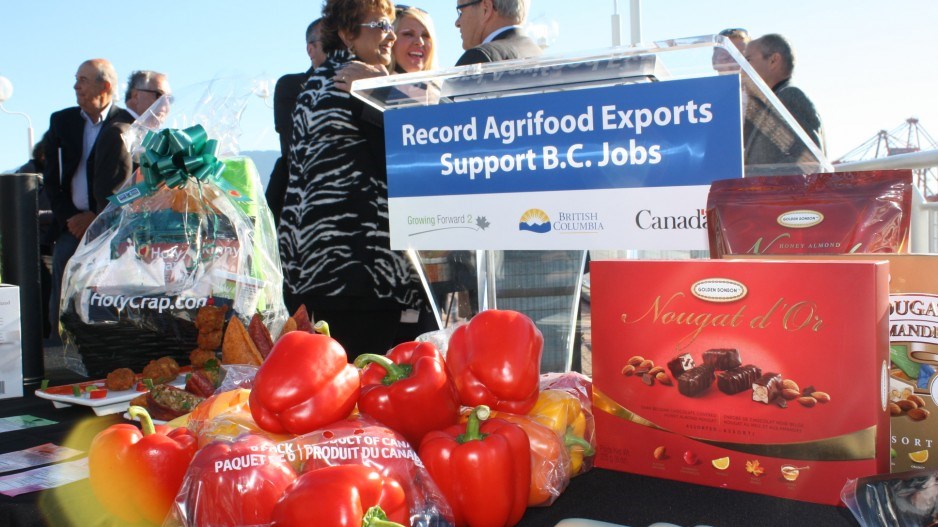Canada should turn to sectoral agreements - that is, deals focusing on specific industries like agriculture and energy - in growing business links with China in light of the perceived “U.S. veto” clause in the new USMCA North American free-trade agreement.
That is one of the 12 recommendations made by Canadian think-tank Public Policy Forum in its new report, titled “Diversification Not Dependence: A Made-in-Canada China Strategy,” released Thursday. The report, the culmination of 18 months of discussion within the PPF’s Consultative Forum on China, included the views of not only academics and government officials, but also NGOs, labour unions and human rights groups, officials with the PPF said.
Forum co-chair (and BMO Financial Group vice-chairman) Kevin Lynch said that while the research was conducted prior to the USMCA’s Article 31.10 was revealed, the report’s findings are very timely considering the circumstances.
“We came to the view - well before anyone was aware of Clause 31.10 in the USMCA - that a sectoral approach gives us better prospects for success [with China] than full-blown comprehensive free-trade negotiations,” Lynch said. “The reason for that is comprehensive trade negotiations take a long time. CETA took eight year; China’s FTA with Australia took 10 years… It’s hard to keep businesses excited, interested and engaged during that time, so I think there’s more of a chance for failure if we try to do that.”
Article 31.10 in the USMCA drew widespread attention when it came to light earlier this fall, when it revealed that the United States could pull out of the pact if Canada (or Mexico) engages a non-market economy in comprehensive free-trade negotiations. China is by far the largest of only a handful o countries defined by the World Trade Organization as “non-market.”
In the report, the PPF suggests that Ottawa turn their attention first to non-sensitive sectors like agri-foods and energy, while staying away from industries that involve technology transfer and national security links. As tariff barriers cannot be addressed outside of an FTA, the report suggests sector-specific efforts like a mutual recognition of certification and a mechanism to mediate disputes between parties to bring Canadian and Chinese businesses closer.
“We note that before free trade with the U.S., there existed a long-standing auto pact, which proved a confidence builder,” the report said as it cited U.S.-Canada relations itself as an example. “A sectoral formulation offers a model for diversifying more rapidly, getting wins on the board, building capacity and avoiding the risk of attempting to leap before we can walk.”
The key, Lynch said, is the accumulate momentum in the Canada-China business relationship sector-by-sector, growing the ground-up support for trade and exchange in lieu of a comprehensive FTA: “There’s no national security issues with selling a Nova Scotia lobster to a Beijing restaurant. And you can get a whole lot of folks doing business there, talking about doing business there, learning about doing business there. That momentum, I believe, begets more interest.”
Lynch added that he isn’t concerned that Washington may see concerns in a sectoral Canada-China approach, noting that the United States have higher proportional exports to China in both agriculture and energy than Canada does.
He did caution, however, that the report’s 12 recommendations - of which the sectoral partnership model is but one - need to be taken as a package, rather than in piecemeal or a buffet fashion. The report also recommends Ottawa negotiating cooperative arrangements with Beijing in global interest areas like environmental issues and climate change, offering Canadian expertise in social consumer protection, and actively adjusting policies and funding to assist companies get “China-ready.”
On the other hand, the PPF recommendation also includes a suggestion that Ottawa draft a clear Parliamentary declaration that Canada will not tolerate external political interference on Canadian sovereignty by any foreign country. Yet another recommendation noted Canada should work with “like-minded countries within relevant international institutions” to get China to abide by its legal commitments in areas such as human rights.
“Canadian human rights groups told us they are not against a trade agreement with China,” the report said. “But they want a) to do no harm [i.e. that China not backslide on existing obligations in the five core human rights treaties to which it is party]; and b) Canada to use any talks to contribute to greater protections on human rights. Polling shows that Canadians don’t consider human rights and economic partnership as a binary choice.”
The report also does not close the doors on a comprehensive trace pact with China in the future - depending on “the course of the new USMCA and whether the U.S. ultimately defines China as a non-market economy.”
Ultimately, Lynch said it is crucial for Canada to have an in-depth, home-made solution to the China-relations dilemma, given the USMCA ordeal and the demonstration that Canada is in more need than ever to diversify its trade beyond the usual markets.
“What the report tries to do is, really purposely, is to find out if there a balance where everyone feels comfortable moving forward,” he said. “I think we found that balance, and I think the government should find that helpful in trying to inform them how to move forward. Canada, in its own self interest, has to diversify trade. So if you accept that, then you have to deepen relations with China. It almost flows logically from the need to diversify our trade.”
The full report can be read at www.ppforum.ca.



